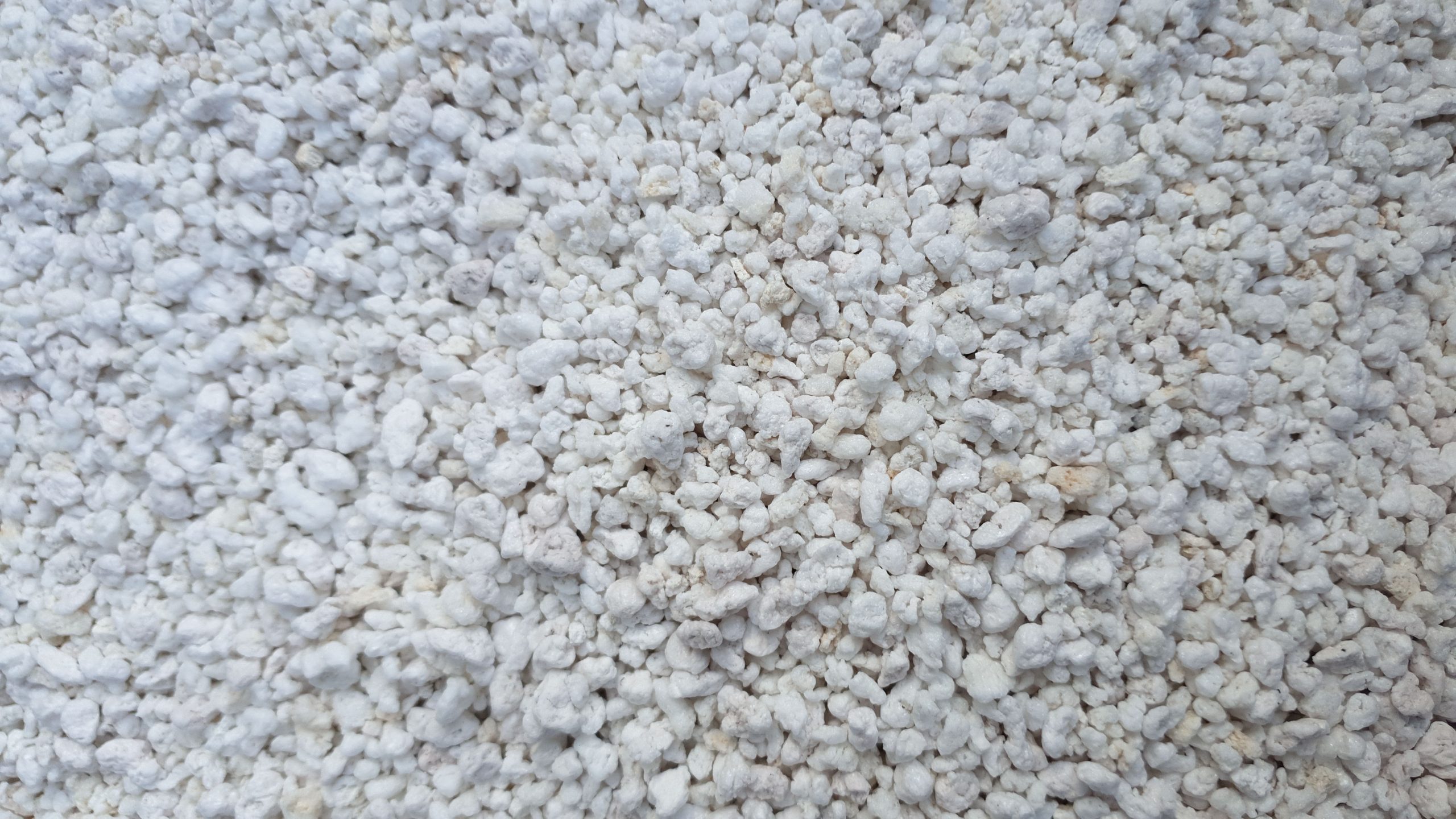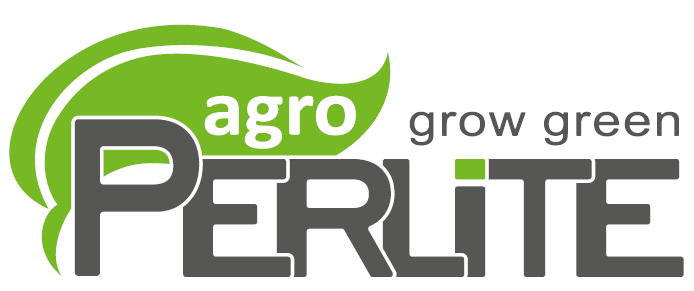

Chemical composition
| SiO2 | 74,0% | - | 78,0% |
| Al2O3 | 10,0% | - | 16,5% |
| Fe2O3 | 0,5% | - | 2,0% |
| MgO | 0,0% | - | 1,0% |
| CaO | 0,0% | - | 2,0% |
| Na2O | 1,0% | - | 5,0% |
| K2O | 1,0% | - | 4,0% |
| L.O.I.(SO3, CO2, H2O) 2,0% - 6,0% | 2,0% | - | 6,0% |
| TRACES | 0,2% | - | 0,8% |
Physical features
| Color | White |
| Smell | Odourless |
| Bulk density | 70 kg/m3(+/- 10%) |
| Specific gravity | 2.1-2.3 |
| Humidity | maximum 3% |
| pH | 6.5 – 8.5 |
| Heating temperature | 890 - 1100 O C |
Sifting analysis
| Mm | %(b.w.) |
|---|---|
| +2.5 | 15 |
| -1 | 5 |
Perlite for Horticulture
When perlite ore is expanded or “popped” by rapid, controlled heating, it expands up to 15 times its original volume and takes on a foam-like cellular appearance – essentially clusters of microscopic glass bubbles, creating a porous structure. This physical transformation makes expanded perlite an extremely effective aggregate for use in horticultural growing mixes – or, by itself, as a medium in hydroponic growing and as a rooting medium. (For a detailed explanation of perlite expansion, see Infosheet: Why Perlite Works).
The primary role of expanded perlite in soilless growing mixes is aeration when added to peat moss, composts, coir and other water-holding aggregates. The porous surface of expanded perlite provides room alternately for both air and water in the mixes – each needed for vigorous root growth. Different sizes of perlite are produced for this purpose, offering growers various amounts of air space after drainage. Usage rates by volume vary from 5% to 40% for potting mixes, and as high as 75% to 100% in green roofs and hydroponics applications. Perlite use is increasing in agricultural and turf grass applications to break up compacted soils and retain water in dry climates.
INFORMATION SHEETS
Green Roofs
Agroperlite
Overview of agroperlite uses and recommendations
Advantages of perlite used in agriculture, horticulture and crop production
Suitable for greenhouses, outdoor and indoor plants and for the plants, which grow in the terraces
Improves soil ventilation (90% porosity)
Improves soil absorption and reduces moisture evaporation
More economical watering procedure
Does not have weed seeds or diseases because it is of inorganic origin
Regulates soil pH as it has a neutral pH
Suitable for seed germination (mixed with peat or pure); can be used as a substitute for soil, for which purpose it can be mixed with other inorganic materials
Suitable for hydroponics and any other ways of growing of plants without soil
Tinka hidroponikai ir bet kuriam kitam auginimo be dirvožemio panaudojimui;
It is used to improve soil in lawns (in parks, gardens, golf courses and football fields), because it improves grass condition, prevents excessive moisture, reduces slipperiness, increases the volume of grass leaves and roots, reduces the need for agronomic lawn maintenance, and lawn maintenance costs
Usage guidelines

For outdoor plants, which are grown in the soil, as well as in the greenhouses, it is recommended that 10-40 % of perlite be added to the soil, depending on the desired result

Planting on the roofs, improving the maintenance of weight and moisture

It is recommended using 20-60% of perlite for the plants, which grow in the containers, pots (for example, a lower weight garden on the terrace); can be used as a drainage substitute

When mulching,it is recommended mixingthe agroperlite with the upper layer of soil or pour a layer of 1-2 cm thick around the plants. To prepare the substrate and improve the soil, 10-50 % of agroperlite is added to the substrate or soil. In order to avoid the dustiness of agroperlite it is recommended that it be easily moistened

When composted, 10-15 % of agroperlite is added to the composting materials. Agroperlite can also be applied on the top with a thin layer

For the seed germination and propagation by cuttings is suggested using pure perlite or up to 1:1 mixture with peat or inorganic substances; for the indoor plants it is recommended using as an additive (10-40 % volume) to the peat substrate or compost land; for the cactus – up to 50-70 % of soil volume;it is recommended using up to 30 % of perlite mixed with 70 % of the soil for the lawns of the park, garden, football or golf fields.Perlite is lightweight, so when the very soft and dry primer is irrigated, perlite rises to the top.In order to avoid this, a higher amount of perlite should be added in deeper layers of the soil, or the surface layer of the soil should be more thickened, the sand should be added to the surface, or it should be mulched (for example, using pine bark, nut shells or other mulch, pebbles)



